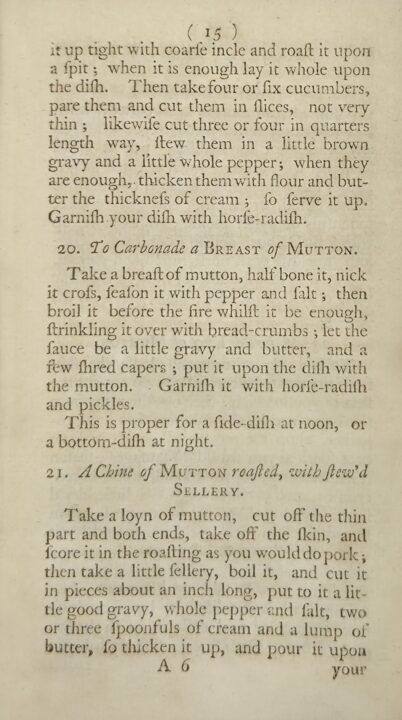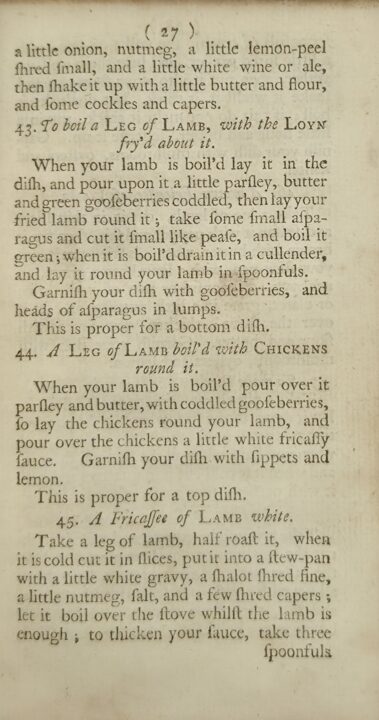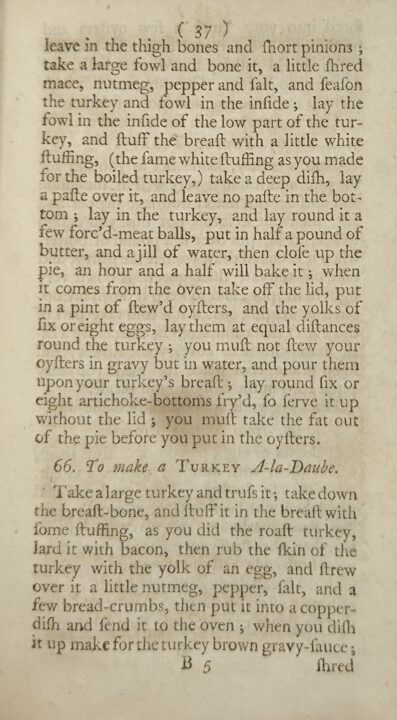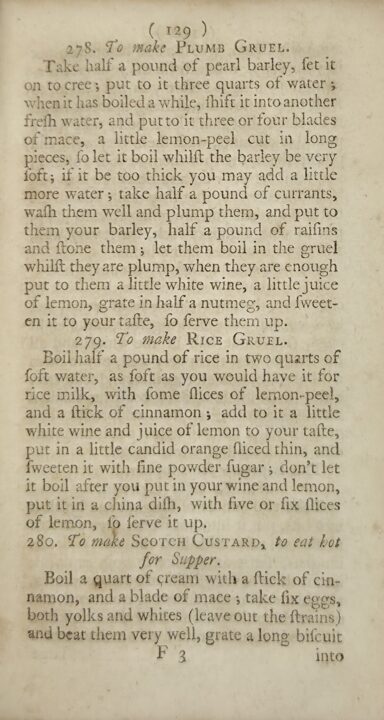Elizabeth Moxon’s English Housewifery Exemplified, first published in 1741 and reaching its tenth edition by 1769, stands as a vital piece of 18th-century culinary and domestic literature. It is more than a simple collection of recipes—it is a reflection of Georgian-era domestic life, offering insights into the tastes, habits, and social customs of middle-class English households.
The tenth edition, published in 1769, presents over 450 recipes (“receipts” in the period spelling) covering everything from soups, meats, and pastries to preserves, pickles, and wines. Written in clear, straightforward language, Moxon’s work was intended to guide not only housewives but also servants, making it one of the more accessible cookbooks of its time. Unlike many of her contemporaries, Moxon included practical directions and measurements, which makes her recipes surprisingly usable even today with some adaptation.
One of the most remarkable aspects of the book is its practical structure. Moxon organizes her recipes seasonally and thematically, offering full menus and preparation timelines for meals ranging from modest family dinners to elaborate feasts. This practical orientation reflects her deep understanding of kitchen management and household organization, skills crucial to running a respectable Georgian home.
From a historical perspective, English Housewifery Exemplified is invaluable. It documents regional English cuisine at a time when cookery was beginning to shift from traditional medieval influences toward more refined, French-influenced tastes. The book includes recipes for Yorkshire puddings, pigeon pies, syllabubs, and jellies—dishes that offer a fascinating glimpse into period foodways and ingredients. Moxon also includes directions for making cordials and wines, emphasizing the housewife’s role in provisioning and preservation.
Despite its practical intent, the book subtly reflects the gender norms and social values of the time. Moxon addresses her readers as responsible women tasked with maintaining the health and status of the household through good cooking and management. In doing so, she affirms the domestic sphere as a site of skilled labor and respectability.
Today, Moxon’s English Housewifery appeals to culinary historians, heritage cooks, and anyone interested in the evolution of British cuisine. The 1769 tenth edition demonstrates the book’s popularity and influence. While some recipes require contextual interpretation, it remains a lively, informative, and surprisingly enduring guide to 18th-century English domestic life.








